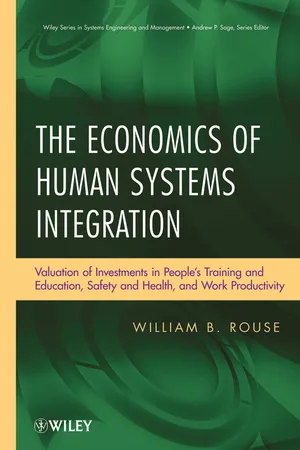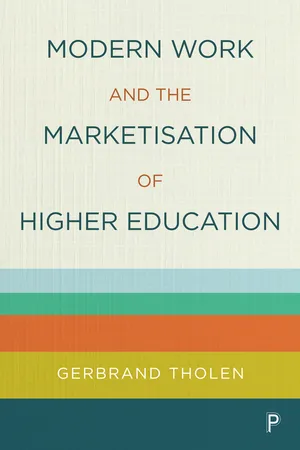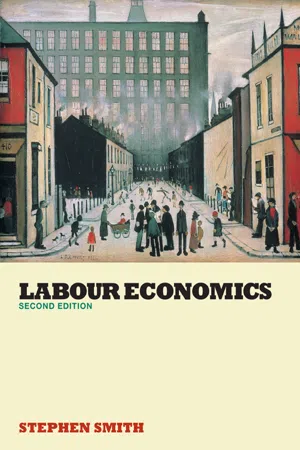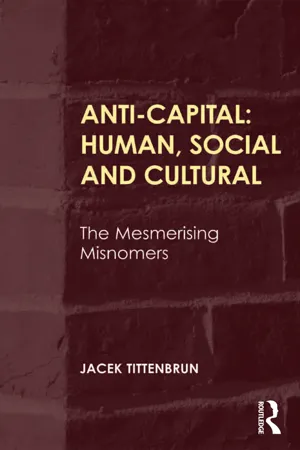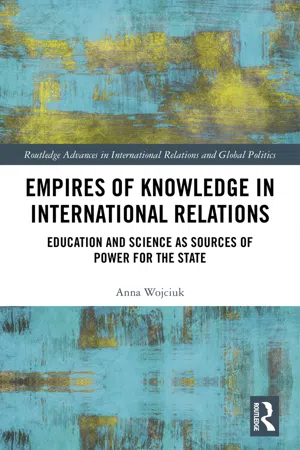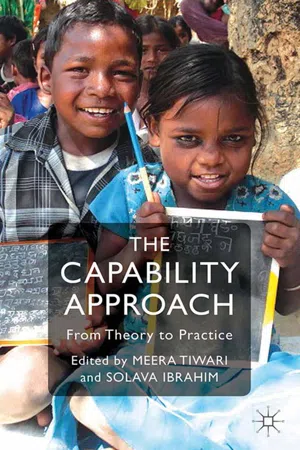Economics
Human Capital
Human capital refers to the knowledge, skills, experience, and attributes possessed by individuals that contribute to their productivity and economic value. In an economic context, human capital is considered a crucial factor in driving economic growth and development. It encompasses both formal education and training as well as informal learning and on-the-job experience.
Written by Perlego with AI-assistance
Related key terms
8 Key excerpts on "Human Capital"
- eBook - ePub
The Economics of Human Systems Integration
Valuation of Investments in People's Training and Education, Safety and Health, and Work Productivity
- William B. Rouse(Author)
- 2011(Publication Date)
- Wiley(Publisher)
Part 2 ECONOMICS OVERVIEWPassage contains an image Chapter 4 Human Capital Economics William B. Rouse 4.1 Introduction
Historically, economists thought of investments in terms of land, labor, and capital. With the Industrial Revolution, financial capital became increasingly important as it was needed to procure capital equipment. With the more recent Information Revolution, highly skilled labor has become increasingly important. This has led to the emergence and growth of a field of economics termed Human Capital economics.“Human Capital refers to the stock of skills and knowledge embodied in the ability to perform labor so as to produce economic value. It is the skills and knowledge gained by a worker through education and experience” (Wikipedia, 2009). This chapter addresses the assessment of investments in creating skills and knowledge.Gary Becker, a pioneer in Human Capital economics, has asserted that one can invest in Human Capital (through education, training, health care, etc.) and the returns depend on the rate of return on the Human Capital one owns (Becker, 1964). Human Capital is a means of production and additional investment yields additional output. He argues the following:- Firms are willing to invest in training workers to develop firm-specific skills that are productive at the current firm but not at other firms.
- Firms are unwilling to invest in general skills training because workers can simply move to new firms—consequently, workers must bear the costs of general skills training.
Card (1999) provided well-documented estimates of returns, in terms of earnings, of elementary, secondary, and postsecondary education. There is little doubt that one's earnings increase with more education. More recently, Becker (2008) summarized these results: - Gerbrand Tholen(Author)
- 2022(Publication Date)
- Policy Press(Publisher)
The concept of Human Capital is used to highlight the classic insight that productive wealth is embodied in labour, skills and knowledge (OECD, 2001). Any stock of knowledge or characteristics the worker has (either innate or acquired) that contributes to his or her economic ‘productivity’ can be included (Garibaldi, 2006 ; Acemoglu and Autor, 2011). Human Capital investments are ‘activities that influence future monetary and psychic income by increasing the resources in people’ and ‘include schooling, on-the-job training, medical care, migration, and searching for information about prices and incomes’ (Becker, 1994, p 11). The individuals thus make investments in themselves and as such become objects of investment, of inputs and outputs. Marketable skills that workers possess are regarded as a key form of capital. Workers improve their skills through training or education which are ‘the most important investments in Human Capital’ (Becker, 1994, p 17). Education drives the marginal productivity of labour and marginal productivity drives earnings. Human Capital acquired through on-the-job training or formal education tends to increase a person’s productivity in the workplace, leading to increased earnings. Wages are based not on the characteristics of jobs, but on the productivity of workers. The lifetime earnings of educated labour, therefore, define the value of investment in education. HCT has become a foundational theory within modern labour and education economics and beyond, and is used and empirically tested throughout the social sciences. It also became the cornerstone of educational policies in most developed nations. The idea that a country’s prosperity is seen as directly linked to the cognitive skills of its workforce is now very much accepted (Hanushek and Woessmann, 2015). Post-war growth in participation in education contributed towards levels of rising national economic growth experienced in many countries- eBook - ePub
Understanding Education and Economics
Key Debates and Critical Perspectives
- Jessie A. Bustillos Morales, Sandra Abegglen(Authors)
- 2020(Publication Date)
- Routledge(Publisher)
6 An exploration of Human Capital theory and its effects on the world of education Halil BuyrukIntroduction
Human Capital Theory (HCT) plays an important part in the effects the economy has on education and in describing the economic role of education. According to HCT, individuals acquire knowledge and skills called Human Capital through a number of activities, mainly through education and training. The knowledge and skills acquired raise humans’ productive capacity. It is claimed that the increase in production capacity and in labour productivity leads to economic growth and that individuals get more shares from the increase in welfare. Another point that HCT stresses is that humans’ expenditures on activities such as education and training to increase their productivity can be considered as an investment. Individuals invest in themselves through education which will turn them into a qualified workforce to raise their income in the future and that they become capital for themselves. This line of reasoning basically indicates two changes. The first is that the rational individuals who consider education only as an instrument to increase their capital search for an education through which they can make a good investment. The second is that the educational processes are transformed on the axis of economy, in a manner so as to raise a qualified workforce as associated with the first one. In accordance with the theory, the goals and content of education – described as an economic variable – are set through time on the axis of improving workforce efficiency, increasing productivity and thus contributing to economic growth. While this rationality causes education to be shaped to meet the needs of the economy, it also leads us to ignore the cultural and social dimensions of education, and the possibility of an education which is not tightly linked to economic outcomes. - eBook - ePub
- Stephen W. Smith(Author)
- 2003(Publication Date)
- Routledge(Publisher)
5 Human Capital INTRODUCTIONEconomics identifies two important categories of expenditure: consumption, which yields immediate benefit in the form of utility; and investment expenditure which increases productive capacity and future incomes. Investment is conventionally regarded in terms of physical capital, such as plant and machinery, yet the notion that educating and training labour increases productive capacity in a manner analogous to physical capital investment goes back at least as far as Adam Smith (1776). In the Wealth of Nations he writes, ‘a man educated at the expense of much labour and time … may be compared to one of those expensive machines’. However, the systematic analysis of education and training as a form of Human Capital investment began in earnest in the early 1960s with the pioneering work of Schultz (1961), Mincer (1962) and Becker (1964). As a consequence of this activity, the concept of Human Capital as an investment raising future income was developed and empirically tested. Since then Human Capital has played an important role in the neoclassical analysis of labour markets, especially with regard to wage determination, and has come to dominate the economic analysis of education. This should not be interpreted as meaning that economics does not acknowledge the consumption benefits of education, yet it does mean that important insights have been gained by viewing education as one of the routes by which Human Capital may be acquired. Human Capital theory has also exerted a powerful influence on economic growth theory, the analysis of health care and of migration patterns.Our treatment of Human Capital will concentrate on investigating the relationship between education and earnings. This chapter will set out an analysis of vocational training. We will discuss the possibility that some individuals are over educated. We will also look into the impact of computers on the labour market and examine whether recent technological change has favoured more educated workers. Finally we will examine the role of Human Capital in a general economic growth model and apply this to industrialised and developing countries. - eBook - ePub
Anti-Capital: Human, Social and Cultural
The Mesmerising Misnomers
- Jacek Tittenbrun(Author)
- 2016(Publication Date)
- Routledge(Publisher)
On the one hand, Human Capital production is as much as any other means of production the result of private, individual investment, even if such is done by the state. If you are poorly educated relative to the market, you have made bad investment choices; equally, if your skills are out of date, or even your character or culture is not conducive to profit, your Human Capital levels are by definition low, since they constitute small increases in productivity as an attribute of your labour. Even when measured in terms of years of schooling, Human Capital measures still weight these by productivity under the normal conditions of declining returns on investment. In other words, it’s yet another form of individualizing the social processes of human life and fostering a competitive, blame the victim mentality. (Krul 2010)Even greater importance than this, after all, rather commonplace criticism of competitive individualism driven by capitalism as its ideological aspect (although it by no means should be dismissed), has its theoretical aspect: Human Capital theory in emphasising an individual effort as a self-made Human Capitalist, ignores the cardinal fact of social production of knowledge, beginning from the institutional process of education through the official curricula to the key medium in the shape of language.The aforementioned scholar has yet several interesting comments to make on the subject:This is also reflected eventually in the schooling and skill-building processes themselves, which under the influence of Human Capital theory […] have aimed to foster the buildup of ‘stocks’ of such Human Capital. This means in practice that they orient themselves to teaching skills which will make these units of labour, humans, more productive in the workplace. (Krul 2010)This time round both the theoretical point (stressing the reduction to the purported lowest common denominator of two antagonistic – in class terms – forces) and an ideological one (bringing out the subservient to capitalist production character of the education system) are well taken. Interestingly enough, Krul begins the next paragraph with the notion whose lack was emphasised above:The nefariousness of this manner of thinking resides specifically in the general failure of neoclassical economic theory to distinguish between labour and labour-power as attributes of workers. Since it does not distinguish different types of input, especially in aggregate, and reduces them all to undefined ‘units’ of means of production, it completely ignores the real-worldly attributes of the ‘factors’ it deals with. A worker can only ever sell their labour power by contract to a capitalist for a given amount of time; his labour,that is the specific, qualitative aspects of work (which exist under all circumstances and in all civilizations) is another thing. Failing to distinguish between these means in the context of Human Capital that those attributes seen as improvements in the qualitative nature of the factor labour are in reality ‘enhancements’ of labour-power. When your schooling and your skills increase your Human Capital, what they do in reality is enhance your abilities to produce capital, in the real and precise sense of the word, during the period in which you apply your labour-power. Any ‘improved’ Human Capital means improved from the point of view of capital, not from the point of view of the human involved. In fact, for capital it does not matter at all whether a human is involved or not as productivity is concerned, which is why its ideology, neoclassical economics, cannot distinguish human from nonhuman inputs. This raises a second issue, namely that because labour itself is done by humans, labour-power also resides in humans. The real struggles in the workplace between labour and capital take place precisely because the human and his labour are not commodities, and cannot be commodities except under conditions of actual slavery. (Krul 2010) - eBook - ePub
- Gary Paul Green, Anna L. Haines(Authors)
- 2015(Publication Date)
- SAGE Publications, Inc(Publisher)
6 Human CapitalHuman Capital is an essential community asset. In many localities, however, Human Capital is underused and underdeveloped. Human Capital includes general education background, labor market experience, artistic development and appreciation, health, and other skills. Most of the economics literature on Human Capital treats Human Capital issues as an individual issue, focusing on the motivation for workers to obtain education and training. In this chapter, we prefer to consider this issue, however, as a community development problem. Our focus is on the linkages between workers, employers, and institutions. More specifically, we examine the role of workforce development networks in building labor market skills. Human Capital, however, has benefits beyond simply getting a high-paying job. It is related to other aspects of quality of life as well.In most cases, Human Capital development emphasizes individual responsibilities and opportunities. Individuals bear the cost and burden of obtaining education and training with the anticipation that they will be rewarded for this investment later. Although many government programs provide job training, these programs tend to focus on specific populations (e.g., youth, unemployed) and often are not well connected with local labor market conditions. Community-based organizations (CBOs) offer a useful strategy for building these assets in a way that simultaneously improves the capacity of workers while meeting the demands of local employers. The asset-based approach builds on the experiences and interests of individuals and communities and matches them with the needs and opportunities in the region.Why do communities engage in workforce development? Many communities have limited information on the changing demands of employers. Having an adequate, skilled, and trained workforce is a prerequisite for economic development. Yet communities face several obstacles in developing their workforce. If the community provides training for jobs that are not available locally, workers may move to where the jobs are, leaving the community with the costs and none of the benefits of the training. If the community attracts new employers requiring skills that are not available locally, the employer may have to hire workers outside the community, minimizing the benefits to the locality. Training institutions have a difficult time gauging the future needs of employers. Much of the training that employers demand is specific and too costly for training institutions to provide. Similarly, the availability and cost of child care and housing in the community may not be adequate to support the workforce. Community organizations can play an important role in making the local labor market more transparent and facilitating the match between the supply of and demand for labor. - eBook - ePub
Empires of Knowledge in International Relations
Education and Science as Sources of Power for the State
- Anna Wojciuk(Author)
- 2018(Publication Date)
- Routledge(Publisher)
A breakthrough occurred in Human Capital theory with the microeconomic works by Becker (1964). Assuming that individuals are calculatingly rational, he proposed a theoretical and empirical analysis of the emergence of Human Capital, with a special focus on education. Becker agreed with Schultz that various forms of learning contribute to an individual’s cognitive capacities, leading to increased productivity and income, which then provides a measure of Human Capital. Becker treated educational expenses as an investment yielding returns traceable both on the level of the individual and the society. He believed that rational individuals invest in their own capital, calculating gains from new abilities, and thus – if their resources allow – learn as long as economically viable. For Becker, Human Capital is a mean of production.Today, Human Capital is defined as the set of abilities possessed by the labour force, and higher skill levels among the workers translate into higher productivity. In light of this theory, education and training makes individuals more productive. At the same time, since education and training require investment, they are treated as capital, just like any other investment that allows for the production of other kinds of capital. Expenses on Human Capital naturally increase when the returns exceed the cost. Within this theory, the return on the investment is primarily private, as increased Human Capital increases productivity, and thus earnings (Acemoglu 1998). However, an increasing number of studies confirms that the profit has a public character. Observable external effects include a general increase in productivity among the labour force by way of a spillover effect, with the overall rise exceeding the sum of individual improvements (Moretti 2004c), but the gains are not limited to efficiency. Public gains also include improvement in general health, internal safety, and the quality of civic involvement (Moretti 2004a, 2004b; Milligan, Moretti, and Oreopoulos 2004; Dee 2004). From a micro perspective, therefore, Human Capital theorists perceive education as an individual choice, whereas macro-level analyses treat it as a public matter. It should be noted in this context that the macro-level gains are not limited to the aforementioned external effects, but also bind Human Capital theory to technological development and growth theory. - eBook - ePub
The Capability Approach
From Theory to Practice
- S. Ibrahim, M. Tiwari, S. Ibrahim, M. Tiwari(Authors)
- 2014(Publication Date)
- Palgrave Macmillan(Publisher)
9 Integrating Human Capital and Human Capabilities in Understanding the Value of EducationEnrica Chiappero-Martinetti and Anna SabadashIntroduction1 ,2The aim of this chapter is to investigate the possibility of combining Human Capital theory (HCT) and the capability approach (CA) in order to better understand and measure both the instrumental and the intrinsic values of education for individuals, and to trace its relative spillover effects on societies. HCT, pioneered by Schultz and Becker in the early 1970s, has since become an important part of the debate on economic growth and development. Recently, HCT has been criticised for the narrow instrumental role that it assigns to education (inasmuch as HCT disregards some of important non-material aspects of education), as well as for its inability to satisfactorily reflect the cultural, gender-based, emotional and historical differences that can influence educational choices and individual well-being.While the economic aspects of educational investment certainly constitute an important part of individual well-being, we should not disregard its other dimensions, such as the impact that education can have on self-worth, social integration and political participation. As the contributions of the present volume show, the broader and richer perspective offered by the CA goes well beyond the narrow notion of material well-being in acknowledging not only the instrumental value of education in promoting productivity, economic growth and individual incomes, but also its importance for individual well-being and social development.As remarked by Sen (1997), HCT and CA are distinct but related areas of investigation as they both put individuals at the centre of attention and are equally concerned with the acquired abilities of people. However, while the former concentrates on the indirect value of education as a ‘capital’ to be invested in the production process, the latter offers a more inclusive perspective able to encompass both the direct and indirect values of human abilities.
Learn about this page
Index pages curate the most relevant extracts from our library of academic textbooks. They’ve been created using an in-house natural language model (NLM), each adding context and meaning to key research topics.
